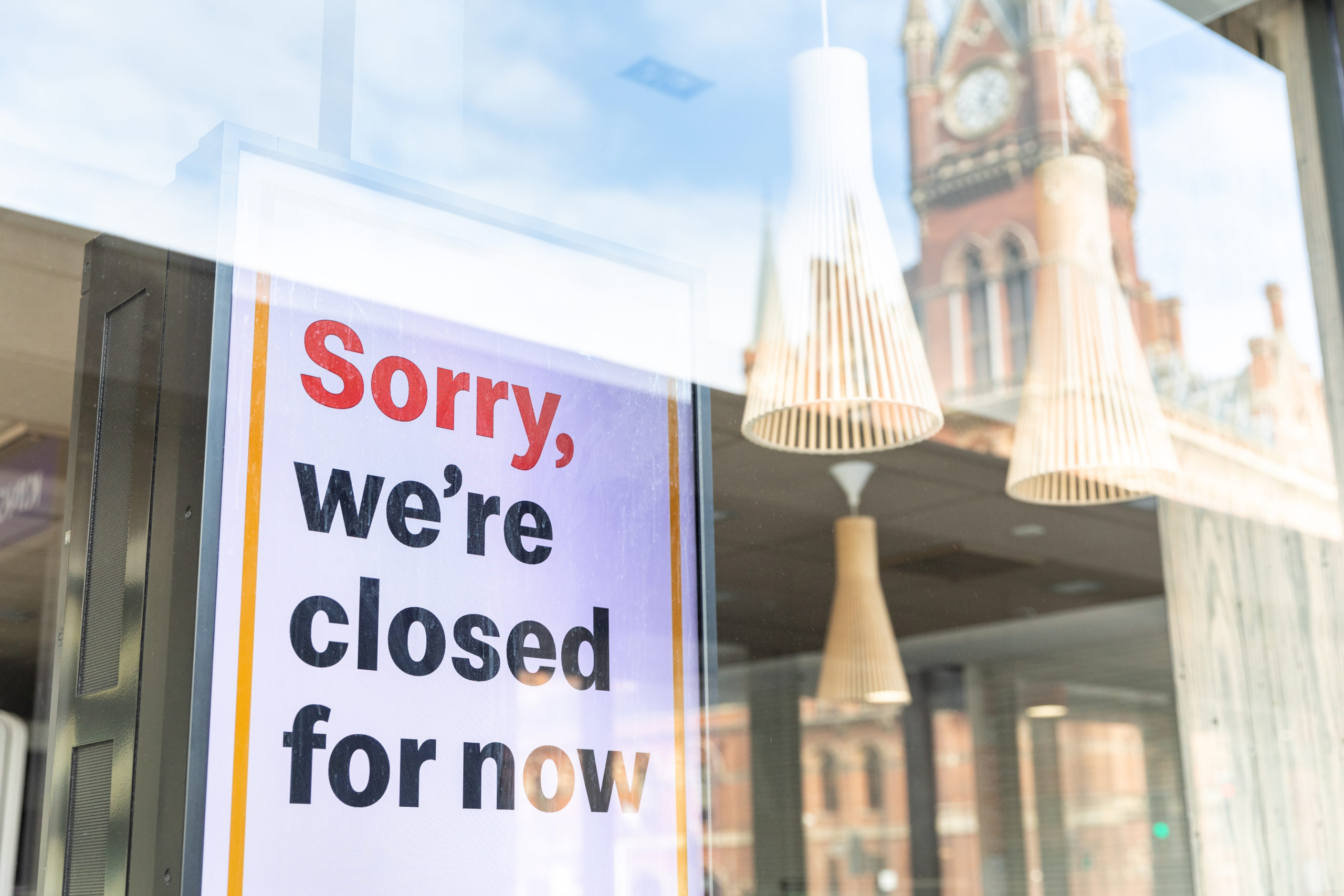It’s exactly one year to the day since the UK awoke for the first time as a nation in lockdown following Boris Johnson’s announcement that tougher measures were needed to fight Covid-19 on the evening of 23rd March.
Fast forward 12 months and, whilst we are once again a nation in lockdown, there is a hint of optimism in the air. The UK’s unrelenting vaccination programme continues to fight back against the virus and a return to some form of normality seems within grasp.
Currency markets also reflected the volatile nature of the wider world over the last year with GBPUSD fluctuating 18% and GBPEUR 8%, as the UK and EU battled to settle on a Brexit deal.
Here, we reflect on the last 12 months of what has been a year like no other, and take a look at how the pound reacted to key events around the world, as well as where it stands today.
Day 1 – the pound nosedives
When word of the lockdown leaked a few days prior to the Prime Minister’s address, the pound dropped to its lowest level against both the euro and US dollar since the 2008 financial crisis, sinking to 1.0608 and 1.1493 respectively. On the morning of 24th March 2020, with the reality of lockdown realised, the pound sat at 1.077 against the euro and 1.1593 against the dollar – lows that it hasn’t dropped to since *touches wood*.

The reasons for this were obvious – the UK was coming to a standstill. No travel, no hospitality, and a heavily restricted services sector – something the UK economy has become so reliant on. All that, coupled with the pending departure from the EU and single market, meant optimism was scarce for sterling.
Just three days before the lockdown was announced, Chancellor Rishi Sunak offered a lifeline to businesses in the form of a furlough scheme that allowed them to keep staff on payroll, with the government covering up to 80% of their wages. Whilst Sunak was praised for the scheme’s launch, this was a clear ‘brace for impact’ moment and one that forecasted the difficult times that laid ahead.
UK GDP has fallen down the lift shaft and will now have to take the stairs – a much slower and more labour intensive process – backup to recover.
Jeremy Thomson-Cook – Chief Economist at Equals Money.
Day 70 – a nation emerges
It wasn’t until 1st June that the first considerable signs of lockdown restrictions easing were seen as reception, year 1 and year 6 children returned to the classroom. Two weeks later, the retail sector started to welcome customers back whilst hospitality had to wait until 4th July until they could offer customers table service.
However, the announcement that GDP fell 20% in April – the worst figure on record – muted any premature optimism and highlighted the uphill battle the UK economy had on its hands. To quote our Chief Economist at the time, “UK GDP has fallen down the lift shaft and will now have to take the stairs – a much slower and more labour intensive process – backup to recover.”
Uncertainty from across the pond in the form of their pandemic response and a tumbling economy saw GBP gain strength against the dollar at the time. However, the pound’s performance elsewhere was far more mixed – a testament to the uncertainty around Covid and Brexit.
Day 203 – warning signs and missed deadlines
With the UK’s R-value above 1 for the first time since March, the government implemented a new three-tier system of local alert levels in October which kicked off with Liverpool as the only area designated as high-risk. Just two months later and nearly 70% of the population would be under the strictest measures of the new system.
More bleak news came in October in the form of the ONS releasing some alarming figures: out of work benefits had risen to 2.7m (double March’s level), the unemployment rate was up to 4.5% and there had been the biggest jump in job losses since statistics were first published in 1997.
Over in the world of Brexit, the day that Boris Johnson had promised the British people a decision came and went. It raised fears that Britain could leave without a deal come 31st December and send the economy into even more disruption.
The pound closed out October down over 4% YoY against the euro at 1.1092 but about level against the US dollar at 1.2929.
Day 223 – Britain locks down, Biden wins
As daily figures continued to rise and with fears that the NHS was only weeks away from being overwhelmed, Britain re-entered lockdown for November, albeit with the promise of a normal(ish) Christmas on the other side.
Later in November, across the Atlantic and after days of uncertainty and controversy, Joe Biden was announced as the 46th President of the United States. With concerns about tax increases under a Biden administration and civil unrest caused by then-President Trump’s refusal to concede to defeat, the dollar weakened and GBPUSD continued on its upward trajectory – a trend that continued into 2021 and resulted in GBPUSD hitting a near 3-year high of 1.4129 just last month.
Fishing was the hot-topic for Brexit as Britain and the EU arrived at another standstill. Despite the frustrations GBPEUR remained fairly stable as markets backed that a deal would be agreed in time, whilst eagerly awaiting a breakthrough.

Day 260 – vaccines can’t save Christmas
Margaret Keenan – a name to remember for any pub quiz fanatics. On 8th December, 91-year-old Margaret became the first person in the world to receive a Covid-19 vaccine – the first of two doses required. It was the first step in a mass vaccination programme that, as of writing, has seen over 50% of the UK population receive their first dose.
Rightfully, the rollout of the vaccine sparked optimism although the government had to temper the mood as daily figures continued to rise at an alarming rate.
On December 19th the mood was well and truly tempered as any remaining hopes of a Christmas that involved households mixing dissipated. Nearly 18 million people across the UK, including London, essentially went back into lockdown, with easing of restrictions for Christmas elsewhere being severely curtailed.
It was a sobering moment and one that put into context the unrelenting nature of the Covid-19 virus.

Day 276 – deal done, just in time for lockdown 3.0
Christmas eve 2020 – just a week before the UK’s transition period for leaving the EU officially ended – we had a deal. The 11th-hour deal left economists across Europe the joyous task of sifting through hundreds of pages of the agreement to understand the terms, but it was done.
The news of the agreement eliminated the risk of a no-deal Brexit and propelled the pound to the highest level against the US dollar since 2018 to close out the year.
Unfortunately, just a couple of weeks later, it was déjà vu as we were once again told to stay at home. Whilst the numbers remained bleak viewing, the Prime Minister did make it clear that, unlike the first lockdown, whilst the nation stayed home “the biggest vaccination programme in our history” would be rolled out.
Sterling wobbled initially as a result of the lockdown, with the government unable to accurately forecast an end to another enforced closure of the UK economy. However, it soon began climbing against both the US dollar and euro.
The use of the word ‘pandemic’ has increased by more than 57,000% this past year.
(Source: OED).
Day 365 – a finish line in sight?
Throughout the Brexit referendum and the pandemic, the phrase “businesses hate uncertainty” was heard everywhere. Whilst nothing is concrete, the roadmap for lockdown ending by June 21st, all things being well, was a welcome tonic for both businesses and individuals alike.
A lot is riding on two things; the ability of the UK to maintain its quite spectacular vaccine program that is seeing a cohort the size of Leeds (circa 750,000) vaccinated everyday, and the knowledge that a viral variant that is immune to the vaccine could pop up from nowhere.
Sterling will eventually forget about the vaccine and hospitalisation rates to refocus its movements on economic data and the questions that need to be asked of the UK economy; how many people lost their jobs? How will the government help them? What is the true trading relationship between the UK and the EU in this post-Brexit world?
Once we have more certainty on those matters, we’ll have a better understanding of sterling’s future path. For now, if the vaccination program remains operational and whizzing ahead, sterling should remain supported.
Here to help
Our teams of experts are on-hand to help your business bounce back from the events of the last year, supporting you with your international payments and business expenses.
Email us at [email protected] or call +44 (0)20 7778 7500 to find out more today.










